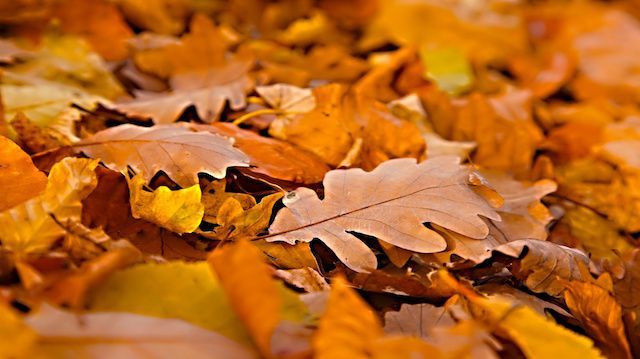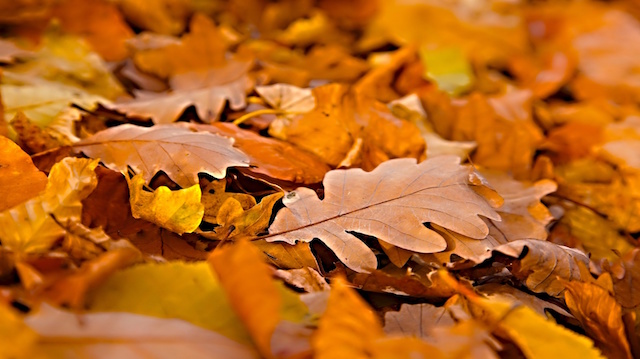
Fall is all about sweaters, hot beverages, and jumping into piles of leaves. We spend hours raking leaves in the fall. Most of us throw them in the trash can, after which they are collected and subsequently end up in landfills. But are these attempts to clean up our yards misguided? Natural gardeners suggest that perhaps it is better not to rake those leaves after all.
Most of us would jump at any excuse not to spend hours raking, but if science supports the idea of leaving our leaves on the ground, even better.
Leaves are full of beneficial plant nutrients
According to research from the Stratford Ecological Center in Delaware, Ohio, leaves are full of nutrients that help feed the soil and prepare it for the year ahead. This is why it is common to see leaves as an ingredient in compost. Rather than raking your leaves and buying compost and fertilizer, just leave your leaves on the ground and allow nature to do its work. (That is, if you can — we don’t want anyone getting HOA fines!) You’ll be the owner of a natural recycling center, and nature will do the work for you.
According to the Stratford Ecological Center, leaves provide the following benefits to the soil:
- Leaves add organic matter to the soil.
- Leaves help retain moisture.
- Leaves insulate plants against freezing temperatures.
- Leaves create soft, crumbly dirt that allows plants to produce deeper roots.
- Leaves feed worms, grubs and other bugs that help maintain good-quality soil.
 Leading garden website, Planet Natural, states that up to 80 percent of the nutrients that plants take in throughout the year end up in the leaves. When those leaves fall back to the ground, they replenish the soil with the nutrients the tree will need in the coming year. Leaves contain high levels of potassium, nitrogen, calcium, phosphorous and magnesium, which are all essential for healthy soil.
Leading garden website, Planet Natural, states that up to 80 percent of the nutrients that plants take in throughout the year end up in the leaves. When those leaves fall back to the ground, they replenish the soil with the nutrients the tree will need in the coming year. Leaves contain high levels of potassium, nitrogen, calcium, phosphorous and magnesium, which are all essential for healthy soil.
How to maximize the nutrient potential of fall leaves
Gardeners can take advantage of the nutrient content of leaves in two ways:
If you just have a light covering of leaves, leave them on the ground. They will create a surface known as “leaf mold,” which sounds horrible but is actually highly nutritious for plants and grass.
If you have a thick covering of leaves, use a lawn mower or other cutting tool to break the leaves into pieces. Make a leaf compost in one corner of your yard by adding other organic matter and nitrogen to create a nutrient-rich compost. Sprinkle this mixture around plant beds and on your lawn before snow falls to utilize the beneficial nutrients in the leaves.
It doesn’t take much to transform fall leaves into nutritional food for your plants. Not only are you creating a greener garden and reusing natural materials, but you are also benefiting your existing plants. Your plants, trees and grass will stay healthy from one year to the next, which will help keep your garden and yard disease-free and growing strong.
—The Alternative Daily
Sources
http://www.dispatch.com/content/stories/home_and_garden/2015/10/04/01-fallen-leaves-are-nutrition-for-the-yard-and-garden.html
http://www.planetnatural.com/leaf-mold

